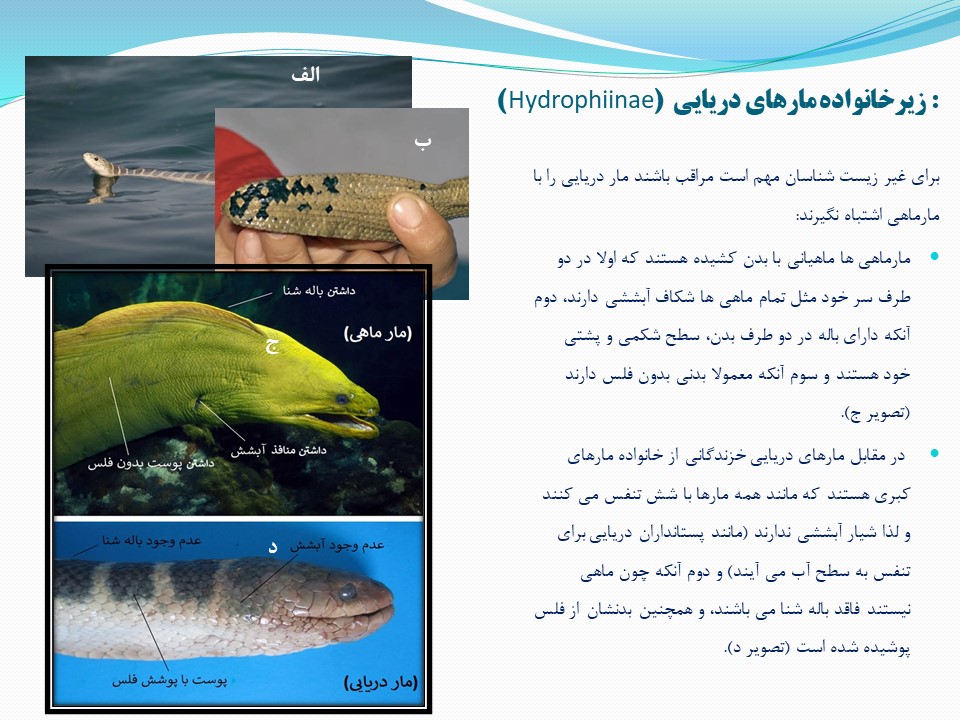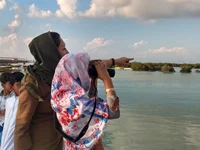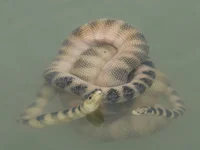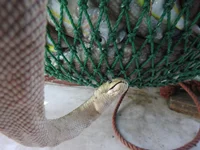Ecotourism and marine reptiles
Duration: June 2018
Type: Education and rising awareness
Taxa: Sea snakes + Sea turtles
QECI's Role: Lecturer
Course provider:
The responsible ecotourism could be a strong driver to promote nature conservation among local communities. The reason is too obvious, because when people feel the nature around them guarantees their livelihood, they will do their very best to protect that. However, behaving responsibly in the nature is not too easy, not when visitors have not enough knowledge about the environment that they are face to face with. The stockholders of Eco-tourism industry, especially Eco-tour leaders and guides, can and should play a vital role in raising awareness among tourists before bringing them to the natural environment.
- A teaching slide showing how a sea snake could be distinguished from an eel! It might be as obvious as a bright daylight for a zoologist. However, most eco-tour guides, and their audience (eco-tourists), are not zoologist. They are people with different specialties who have come together based on the shared interest in the nature. Therefore, learning simple facts about wild animal and habitats help them to know nature much better, which is the mission of conservation education. As Baba Dioum said “In the end we will conserve only what we love; we will love only what we understand; and we will understand only what we are taught”
Mashghe-Afarinesh Institute, a non-governmental educational institute based in Bandar-Abbas in southern Iran, has a long experience in training Eco-tour leaders under supervision of the Iranian Ministry of Cultural Heritage, Tourism and Handicrafts. One of the courses that the candidates need to pass before being certified is “introduction to the native herpetofauna”. In 2019, this course has been held by QECI with a focus of marine reptiles, which comprise a significant proportion of the native reptiles.
There are 15 species of marine reptiles recorded from coastal waters of southern Iran, including 10 species of sea snakes (subfamily Hydrophiinae) and five species of sea turtles. Visitors just need to be present at the right place and time to watch the critically endangered hawksbill turtles nesting on the Iranian sandy shores, or endangered green turtles foraging on shallow waters, or highly venomous sea snakes gently swimming at the surface. However, without enough knowledge, this contact not only can’t be joyful, but might be also harmful for the wildlife and sometimes even for humans. For example, visiting turtle nesting beaches without following the protocols disrupts the nesting animals, and can also cause habitat degradation. On the other hand, touching a highly venomous sea snake by a curious person can be a fatal contact for the human.
In the course mentioned above, the participants learned about the basic biology of marine reptiles, and also about their diversity along Iranian waters. Then they learned about the codes of conduct that visitors need to follow when encountering marine reptiles in nature, like when they visit sea turtle nesting beaches. They were also tought about the importance of citizen science and trained for collecting useful data during their trips that can help conservationists to provide a better insight into the status of wild populations. Finally, the participants learned about the sea snake envenomation emergency first aid to be ready for any unfortunate accident.






